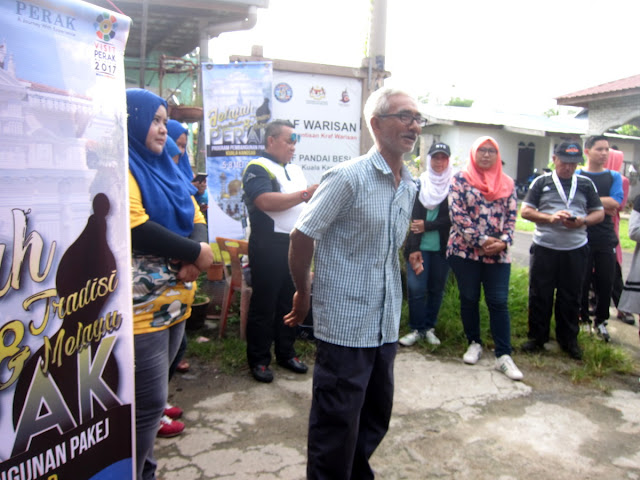A good keris is one that is well-balanced and is able to stand on its own.
Little that we know.
According to En. Abdul Mazin, a highly skilled Empu or keris-maker/master craftsman on keris-making, one can validate how good a keris is by testing its ability to ‘stand’ on its own. A fit that reflects how skillful is the empu himself. It proves that the empu is experience in making sure a balance mix of metal composition, shape, the right hilt size, weight and carved (lekuk), which plays a major role in ensuring the centre of gravity is at the central point.
The Malay asymmetrical dagger (keris or kris) is made and achieved through alternating laminations of irons. A keris is divided into three parts: bilah (blade), hulu (hilt), and warangka (sheath). As a weapon and a piece of Malay Nusantara art, it is often carved and designed in great intricacy with aesthetic value. Precious and rare types of wood, gold or ivory are being used to decorate its sheath and hilt. A distinctive keris known today is the Keris Taming Sari, Laksamana Hang Tuah’s dagger. It is said that the sheath is covered with gold leaf and that the hilt is in green with red studs. There are folklore/legend stating that Keris Taming Sari has mystical powers as the opponents are unable to defeat the owner, making him invulnerable. It is also said to be capable of hovering in the air when pursuing the enemy.
Pak Mazin, hails from Kampung Padang Changkat in Kuala Kangsar is a very experience empu. He started experimenting his interest and skill at the age of 12, back in the 1960s, was entrusted by Istana Negara to produce the ‘keris hukum’, part of the royal regalia for the installation of Tuanku Abdul Halim as the 14th Yang di-Pertuan Agong. His talent comes as no surprise, as he inherited his skill and knowledge from Pandak Lam; his grandfather, who is also the son of Tukang Mamat, who is the royal craftsman of Kuala Kangsar. Started by learning about the metal types such as soft iron, tempered steel and undascened steel, once this is mastered, one can then learn to heat up and forge the metal.
This mixed metal will be heated up and thinned out with seven pieces of metal tied together with a wire, then repeating the process of heating up, merging and thinning out. It is noted that the process of merging the metal must be done in great care as this is to ensure a high quality keris is being produced. We were told that a real bilah (blade) will have 15 layers of metal; seven each in the front and back, while a layer of steel in being alternated in the middle, between soft iron and undascened steel.
Pak Mazin once said that the keris symbolises the power and the valour of the Malay people, upholding our heritage and culture is our utmost priority. And I agree.
An event organised by Tourism Malaysia with KTMB as main transportation partner.













Tidak ada komentar:
Posting Komentar